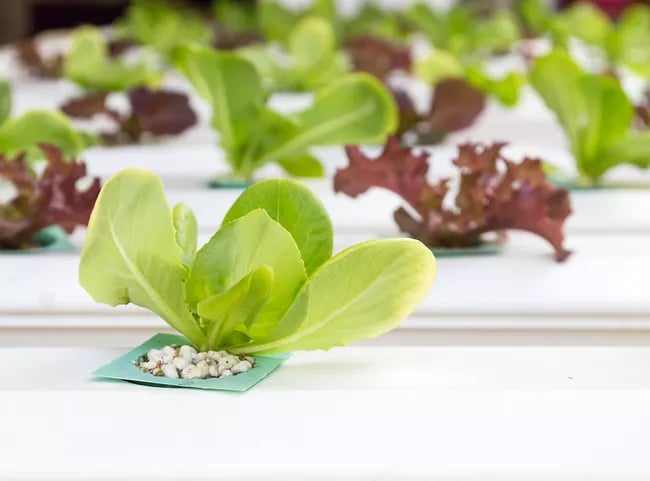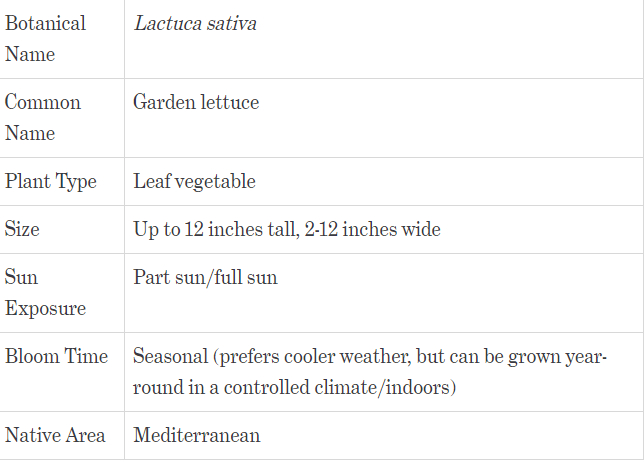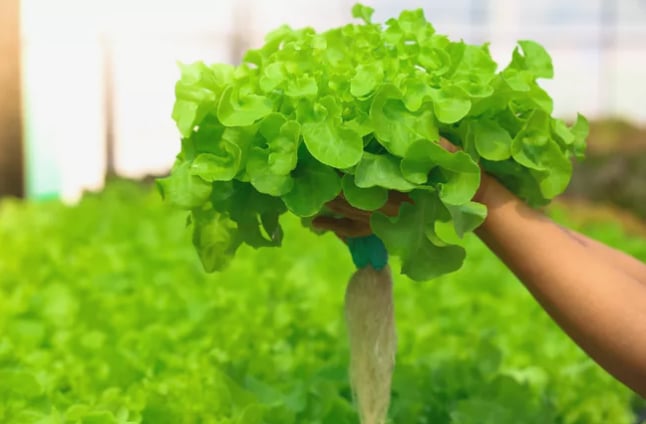May 25, 2025 | 09:43 GMT +7
May 25, 2025 | 09:43 GMT +7
Hotline: 0913.378.918
May 25, 2025 | 09:43 GMT +7
Hotline: 0913.378.918

Photo: Songsak Paname / EyeEm / Getty Images
The crisp, leafy green is very easy to grow hydroponically, plus the vegetable itself is super versatile in the kitchen.
An extremely fast-growing hydroponic crop, lettuce matures in about a month’s time. The small seeds are easily germinated in a soilless growing medium before being transferred into a hydroponics system fitted only with nutrient-rich solution.
The plant is a great source of minerals, fiber, and bioactive compounds—such as folate, B-carotene, and lutein—that promote a nutritious diet. Studies show that certain types of lettuces (particularly those with darker or red pigments as well as leafy types) have anti-inflammatory, cholesterol-lowering, and even anti-diabetic properties thanks to their bioactive compounds.
So if you’re curious about starting your very first hydroponics garden and need a beginner-friendly plant to kick it off, lettuce is what you're looking for. The following tips will get you going in the right direction.

Source: Treehugger
How to Plant Hydroponic Lettuce
Get started by germinating your lettuce seeds in a growing medium such as rockwool, lightweight clay aggregate, coconut fiber, or perlite.
Growing From Seed
Don’t expect all of your seeds to germinate property—it will likely be closer to 75%, depending on the type of lettuce. Fill your trays with a growing medium and slowly add water to make them moist but not soggy. Sprinkle up to three seeds in each plug and cover with about a quarter-inch of medium, compacting them slightly.
Continue to mist the seeds regularly to keep the growing medium moist as they develop. Once the plant has produced a few mature leaves and roots that stick out of the bottom of the medium (usually around two to three weeks or when they’re about 2 inches tall), it’s time to transplant them into your permanent hydroponics system.
Transplanting
When transplanting your seedlings from the plug trays to the hydroponic system, it’s important to avoid pulling too hard at the new stalks since it can easily kill the plant. Very gently, loosen the roots with your fingers and carefully place each seedling into its own pot, tucking the roots through the slats so they dangle into the nutrient solution below.
Hydroponic Lettuce Care
As previously stated, hydroponic lettuce is extremely easy to grow, so it doesn’t require much maintenance once established into your system.
It will mostly come down to providing adequate light (which varies depending on if you’re growing outdoors or indoors), maintaining air temperature, and adjusting the nutrient levels to ensure the best results.
Light
Lettuce doesn’t demand a lot of light, so start with anywhere from 10 to 14 hours of moderate to low light each day. Given too little light, the plants won’t grow as efficiently, while too much may cause the leaves to go bitter.
Keep in mind that darker red leaf varieties won’t maintain as much color under low light quality, so it’s a good idea to consider supplementary lighting if you notice muted colors in your lettuce.
Water
Check your nutrient solution regularly for signs of evaporation and supplement accordingly, but you’ll likely have to replace the entire solution every two to three weeks. After harvesting, you can use the spent solution to water your regular garden or house plants.
Temperature and Humidity
Remember to maintain a cool air temperature, preferably under 75 degrees Fahrenheit, as lettuce is a cool season crop (again, hotter temperatures can cause your lettuce to grow bitter).
Keep day temperatures between 68 and 75 degrees Fahrenheit and night temperatures slightly lower, between 60 and 65 degrees Fahrenheit.
Growing Mediums and Nutrients
Since hydroponic lettuce grows with its roots directly in water, there’s no need for soil. Instead, gardeners use a growing medium both to help the seedlings sprout initially and also to provide physically for the roots as the plant continues to grow.
For germinating lettuce, stone wool (rockwool) and phenolic foam are commonly used, as well as coconut fiber and perlite.
For nutrients, leafy greens like lettuces require more nitrogen than other plants since nitrogen is best for stimulating leaf growth. Lettuce also needs plenty of potassium to prevent wilting and to encourage a stronger structure.
Hydroponic Lettuce Varieties
It’s possible to grow practically every type of lettuce hydroponically, though gardeners tend to lean towards loose head varieties since it’s easier to harvest their leaves individually—thereby prolonging the entire plant’s harvest life. Some of the more popular types include the commonly grown butterhead lettuce, robust and crispy romaine lettuce, and varieties of mild loose-leaf lettuce.
Consider the fact that certain types vary in their growing times, as well. Butterhead and romaine, for example, are ready to harvest in about three to four weeks, while sturdier lettuces like iceberg will be ready to eat in six to eight weeks.
How to Harvest Hydroponic Lettuce

Photo: Nipol Plobmuang / EyeEm / Getty Images
With the exception of crisphead types (like iceberg lettuce), most varieties are best harvested by taking the bigger, outer individual leaves without removing the entire head. That way, the smaller, inner leaves have room to continue growing. That being said, you can also harvest the entire head at one time, though it will take longer—anywhere from five to six weeks—to develop.
To harvest the whole head of lettuce at once, either remove the entire plant by cutting from the roots or cut off all of the leaves at one time from the base of the plant.
If you plan on continuing your hydroponic lettuce garden, make sure you have replacement seedlings ready to replant into the system.
How to Store Hydroponic Lettuce
Individual leaves of lettuce should be eaten right away, though harvesting the entire head at once means it will stay fresh for longer in the fridge. To extend its life even further, wrap the crown in a damp paper towel or place the bottom in a shallow bowl of water.
(Treehugger.com)

(VAN) Alt Carbon has raised $12 million in a seed round as it plans to scale its carbon dioxide removal work in the South Asian nation.

(VAN) Attempts to bring down the price of the Japanese staple have had little effect amid a cost-of-living crisis.

(VAN) Fourth most important food crop in peril as Latin America and Caribbean suffer from slow-onset climate disaster.

(VAN) Shifting market dynamics and the noise around new legislation has propelled Trouw Nutrition’s research around early life nutrition in poultry. Today, it continues to be a key area of research.

(VAN) India is concerned about its food security and the livelihoods of its farmers if more US food imports are allowed.

(VAN) FAO's Director-General emphasises the need to work together to transform agrifood systems.

(VAN) Europe is facing its worst outbreak of foot-and-mouth since the start of the century.